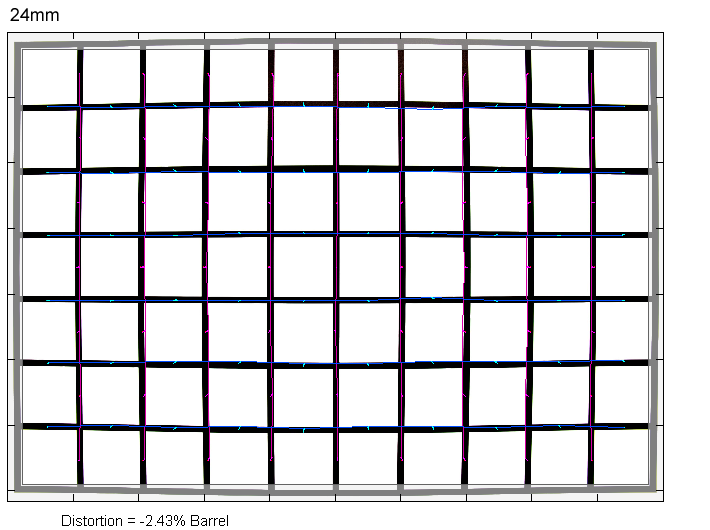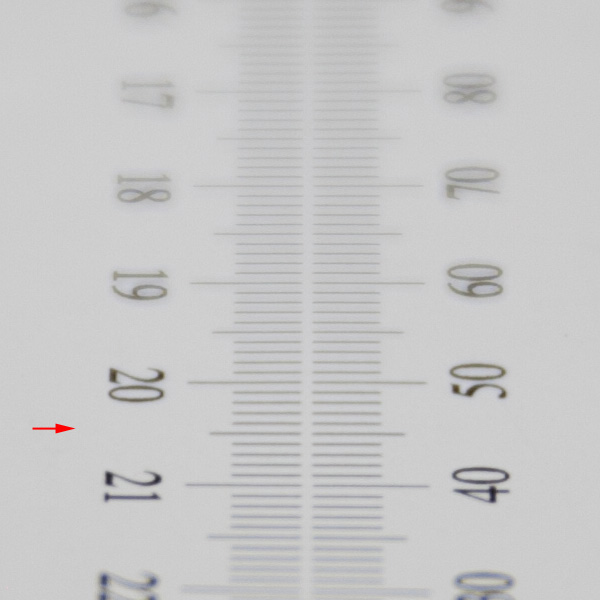|
Canon EF 24-70mm f/4 USM L IS - Full Format Review / Test Report - Analysis |
|
Lens Reviews -
Canon EOS (Full Format)
|
|
Page 2 of 3

Distortion
The distortion characteristic is above average (=lower) for a lens in this class although it still produces a medium barrel distortion at 24mm (~2.4%). This eases towards the middle of the zoom range. At 40mm images are basically distortion-free whereas there is a pincushion type of distortion again at 70mm (~0.7%).
|
Move the mouse cursor over the focal length text marks below to observe the respective distortion
|
| 24mm |
40mm |
70mm |
|

|
Vignetting
The vignetting is comparatively low within the full format scope. There's still a heavy amount of light fall-off at 24mm @ f/4 (~1.9EV) which will be readily visible in field images. The issue is better controlled at 40mm and 70mm although it's still far from being insignificant at f/4. Stopping down to f/5.6 resolves most of the issue at 40mm/70mm but the fall-off remains fairly high at 24mm - even at f/11 (~0.9EV).

MTF (resolution)
The resolution characteristic of the Canon EF 24-70mm f/4 USM L IS is impressively high and even throughout the zoom range. The center performance is already excellent at f/4 followed by very good borders and good to very good corners. Stopping down to f/5.6 or f/8 results in a slight increase in performance (on this high level). Diffraction effects reduce the quality from f/11 onward at all focal lengths - this is simply a physical limitation. However, even so the results are still on a very good level here.
The lens showed only a minor degree of field curvature. The centering quality of the tested sample was acceptable but not great.
Please note that the MTF results are not directly comparable across the different systems!
Below is a simplified summary of the formal findings. The chart shows line widths per picture height (LW/PH) which can be taken as a measure for sharpness.
If you want to know more about the MTF50 figures you may check out the corresponding Imatest Explanations
Chromatic Aberrations (CAs)
Lateral chromatic aberrations (color shadows at hard contrast transitions) are very well controlled with a peak of 0.7px on the average at the image borders. This is usually nothing to worry about then.

Bokeh
Normally we don't really formally test the bokeh quality of "slow" lenses such as the EF 24-70mm f/4 USM L IS but given its professional nature it's relevant for many customers.
Out-of-focus highlights show a near-circular shape at large aperture settings but the inner zone of these "discs" is quite busy/nervous albeit this is slightly better than in the EF 24-70mm f/2.8 USM L II. The circular shape remains mostly intact till about f/8 (tested at 70mm).
 As usual the highlight discs deteriorate a bit in the border region - below is a sample crop showing the usual "cat's eyes" here. Stopping down reduces the issue.
As usual the highlight discs deteriorate a bit in the border region - below is a sample crop showing the usual "cat's eyes" here. Stopping down reduces the issue.
 The quality of the blur in the focus transition zone is good for a standard zoom lens. It's pretty smooth in the background (left crop below) and slightly more nervous in the less critical foreground.
The quality of the blur in the focus transition zone is good for a standard zoom lens. It's pretty smooth in the background (left crop below) and slightly more nervous in the less critical foreground.

Bokeh Fringing / Longitudinal Chromatic Aberrations (LoCA)
Bokeh fringing isn't really a substantial issue in slow speed lenses anymore. The EF 24-70mm f/4 USM L IS shows very marginal traces at f/4 but they are gone at f/5.6.
However, when browsing through the sample crops below you will notice two things:
- the macro performance is not all that great at 70mm @ f/4. There is no really sharp spot here in this image. To be fair - it looks very sharp at f/8 though.
- the focus point shifts SUBSTANTIALLY when stopping down. Or in other words: the lens suffers from residual spherical aberrations (RSA). In close focus situations this is rather poisonous and the problem was affecting images taken at more conventional distances. The user who supplied the lens checked this behavior with a 2nd lens and this focus characteristic was the same here. This is NOT (sufficiently) compensated by the AF. We did AF reference checks during the MTF analysis and there's a decrease in measured resolution (= increase in focus shift) from f/4 to smaller apertures.
Note: The AF was, of course, deactivated during the testing procedure here.
|
Move the mouse cursor over the f-stop marks below to observe the respective LoCAs
|
| f/4 |
f/5.6 |
f/8 |
|

|
These sample portions were taken at ~70mm.
|